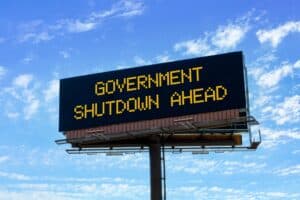PENNSVILLE TWP. Winter’s role in modern human conflict is long: George Washington’s crossing of the Delaware River, the failed invasions of Russia by both Napoleon and Hitler, the Ardennes Offensive of 1944 or the “Frozen Chosin” Korean War campaign.
With temperatures in the 30s, the numerous lantern- and flashlight-guided walking tours who took to Fort Mott State Park for the fourth annual Soldiers’ Christmas on Saturday night saw and felt what it was like for men in uniform on the front lines during the holidays.
“As soon as you walk into those woods, it drops 10 degrees,” Matt Carroll, re-enactor with the 9th Division WWII Historical Preservation Society, said of Belgium’s Ardennes Forest, which he knew from personal experience.
The Ardennes was the setting of Hitler’s last great gamble in World War II, also where Carroll and fellow re-enactors about to be relieved from the front lines as of Dec. 23, 1944 were thrust back into the Battle of the Bulge.
Inside their captured bunker, a Christmas tree adorned with hand grenades was on display. Nearby, South Korea circa the early 1950s, as well as the 1980s, was well represented.
Steve Crowley, who was in charge of a mess tent staffed by brother Dan and sons Shawn and Kevin, were helping make cookies and pumpkin bread inside their facility filled with ovens and prep tables.
“We try to feed the troops out here one hot meal a day,” Steve Crowley said before offering visitors cookies they had just pulled from the oven.
While trying to “make the boys feel a little nostalgic” at Christmas, cooks would have to make do with either frozen or canned food shipped over from the states, items native to Korea and a stray mortar round landing in their area.
Down a dark path and up in the fort’s bunkers, the 38th parallel diving north and south Korea was guarded by U.S. Army forces circa 1983.
Five million land mines lay in wait for the 2 million Communist combatants to the north, who were known to dig tunnels toward a force of 53,000 U.S. and U.N. soldiers.
Around Christmas, it gets down to around 20 or 30 degrees below zero at the 38th parallel, which forced those guarding it to constantly fire up their diesel-powered vehicles to keep the fuel from gelling.
Inside a pillbox, Chuck Romond, of Runnemede, explained the pros and cons of tracer rounds fired by a nearby M-60 machines gun you can see where the bullets are going at night, but the enemy can see where they’re coming from.
Inside their cold quarters within Fort Mott, Hessian soldiers from the Revolutionary War said their trade “We’re here to fight the rebel scum.” was simply business. Around the corner, a U.S. Army National Guard armored division from 1967 explained their roles in quelling the Newark riots.
William Meehan, of Vineland and a self-described 7-year “tanker” U.S. Army vet, provided back-and-forth banter with Daniel McCarthy about moon landings, awarding medals and new cars.
Outside, Germany cavalry forces trotted about while pioneer troops sheltered inside. The Treaty of Versailles, signed in the wake of World War I and meant to limit Germany’s future military strength, made no provisions against horses, so the country seized upon it between wars. Seven million horses would die during World War II.
Even deeper inside Fort Mott, Roman warrior George Metz wearing sandals with his shins exposed explained that the fallen empire was part of the reason why Christmas is celebrated on Dec. 25 each year.
“He had a lot of authentic equipment,” said Donald Gaddy, of Carneys Point, who soldiered through the cold with Norma Gaddy.





